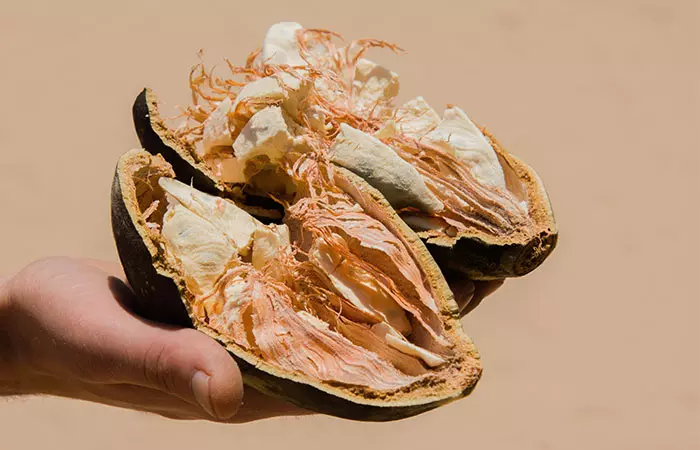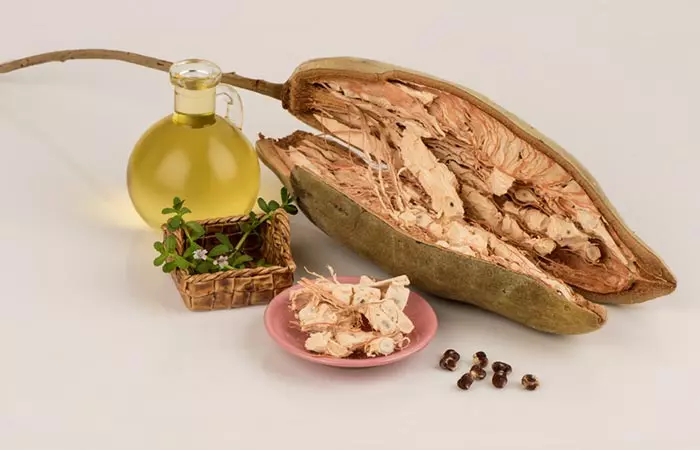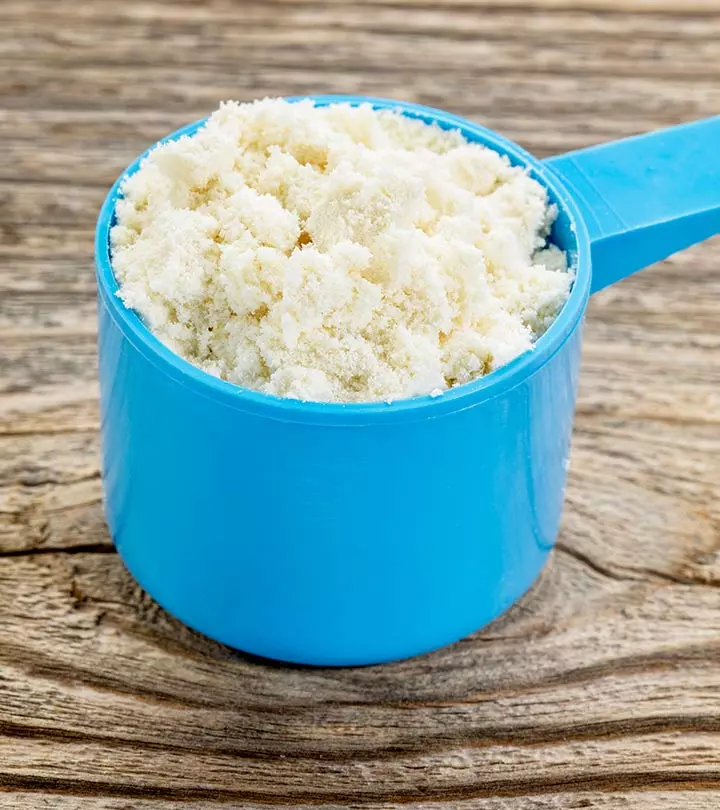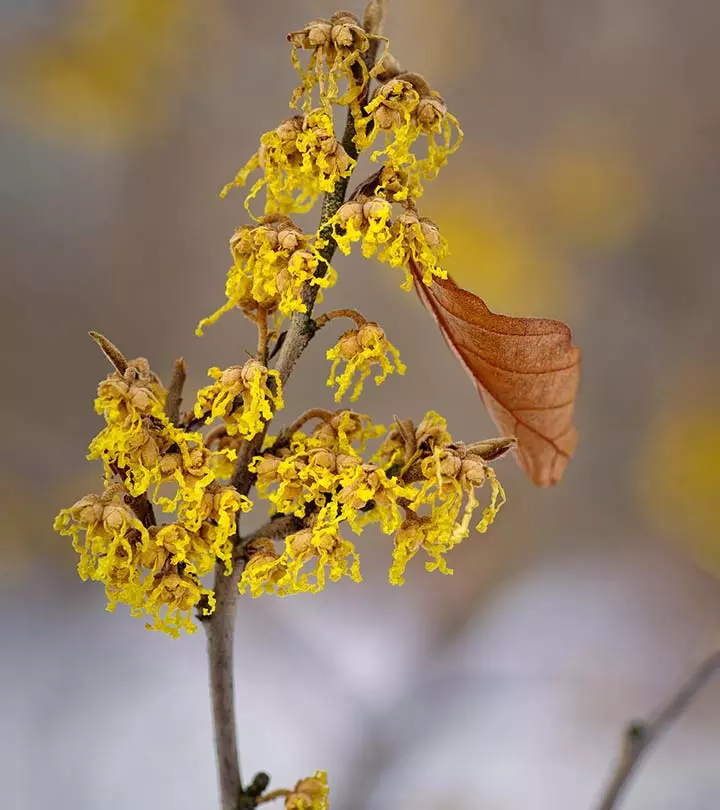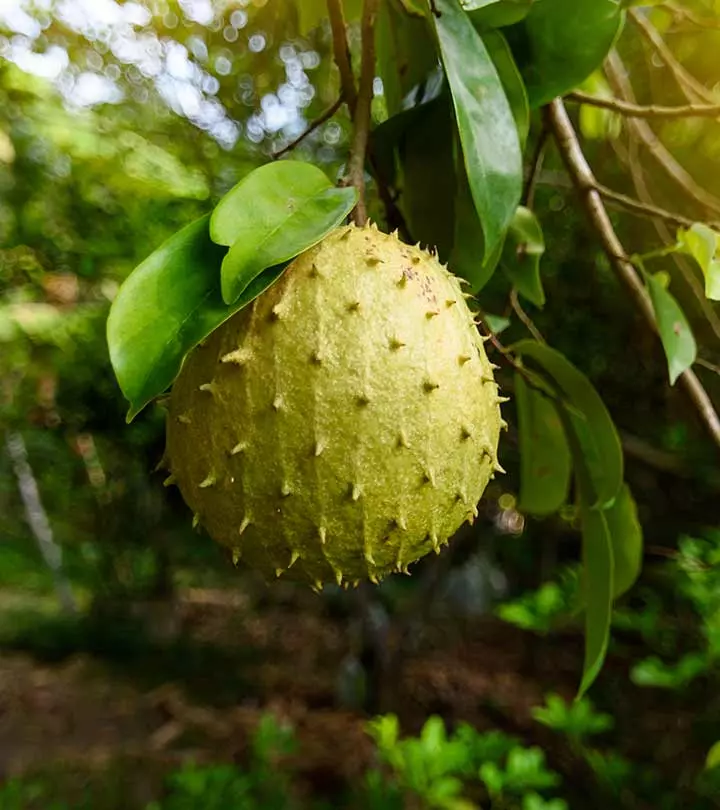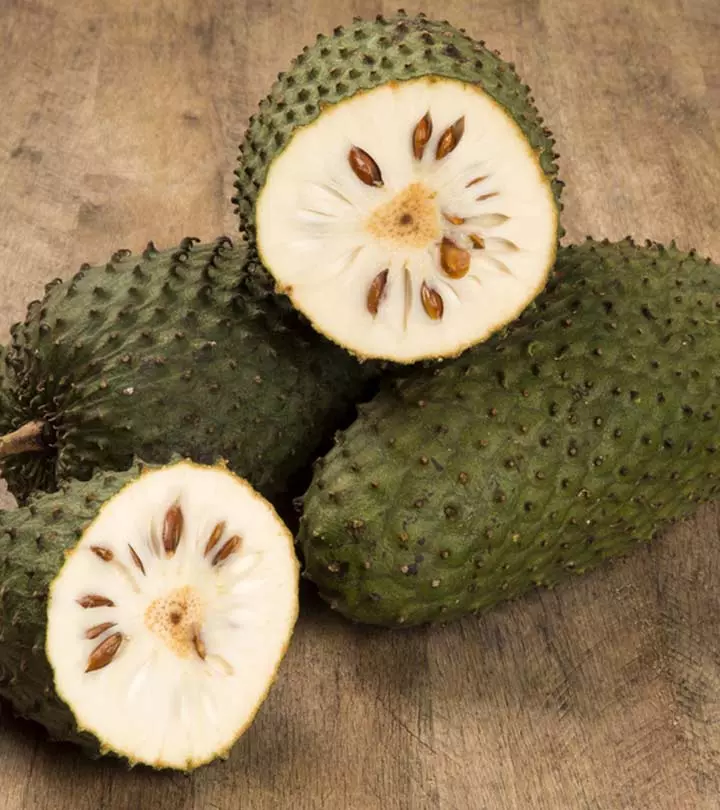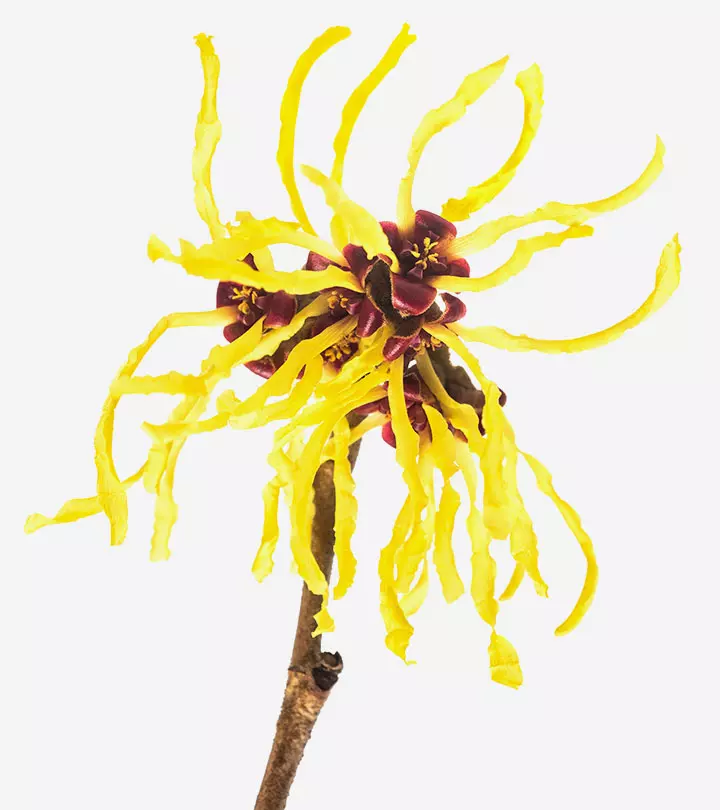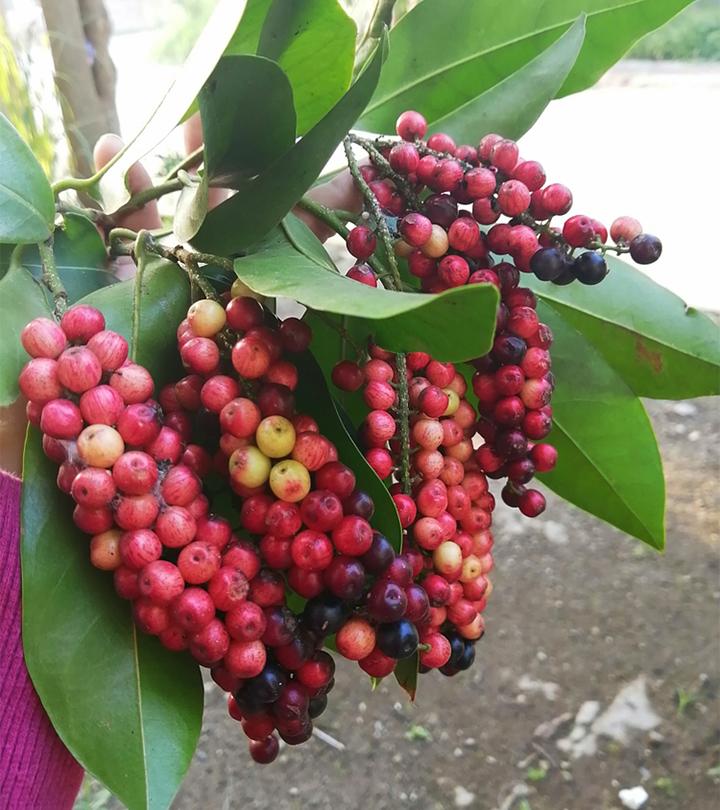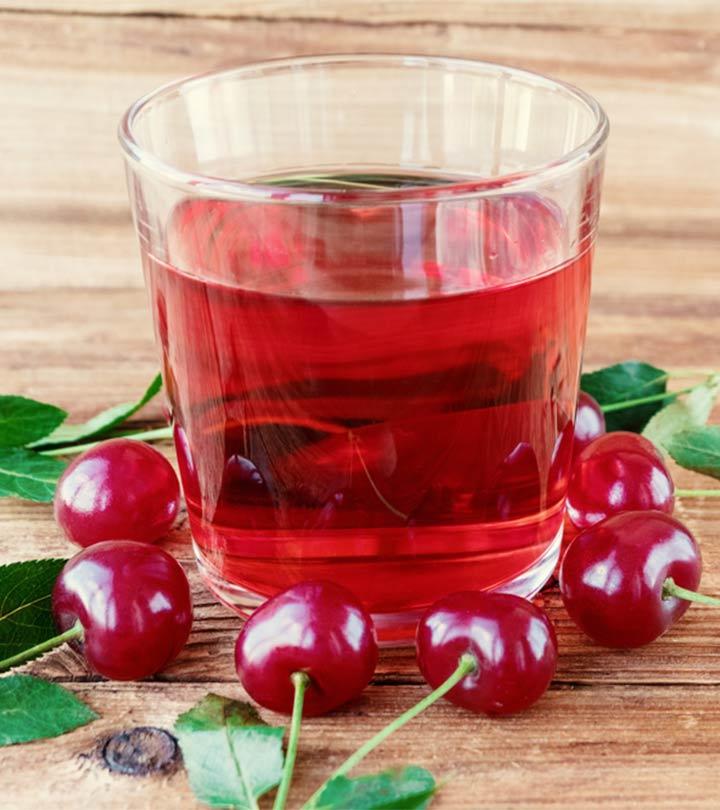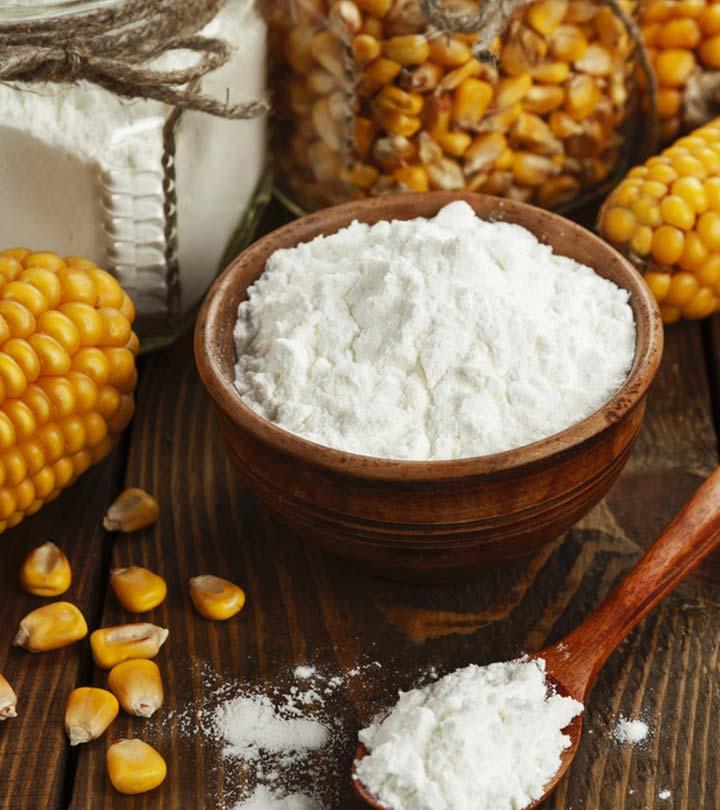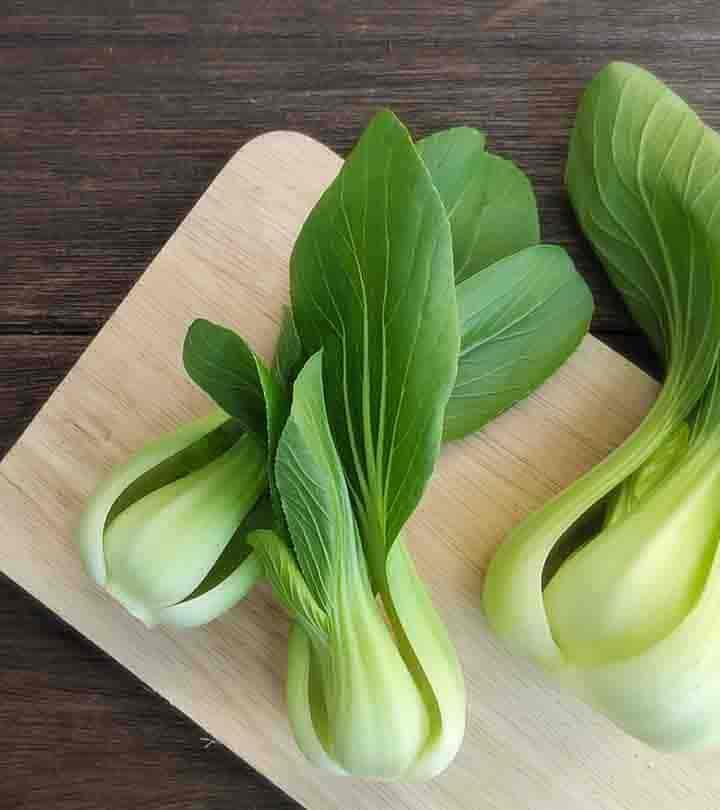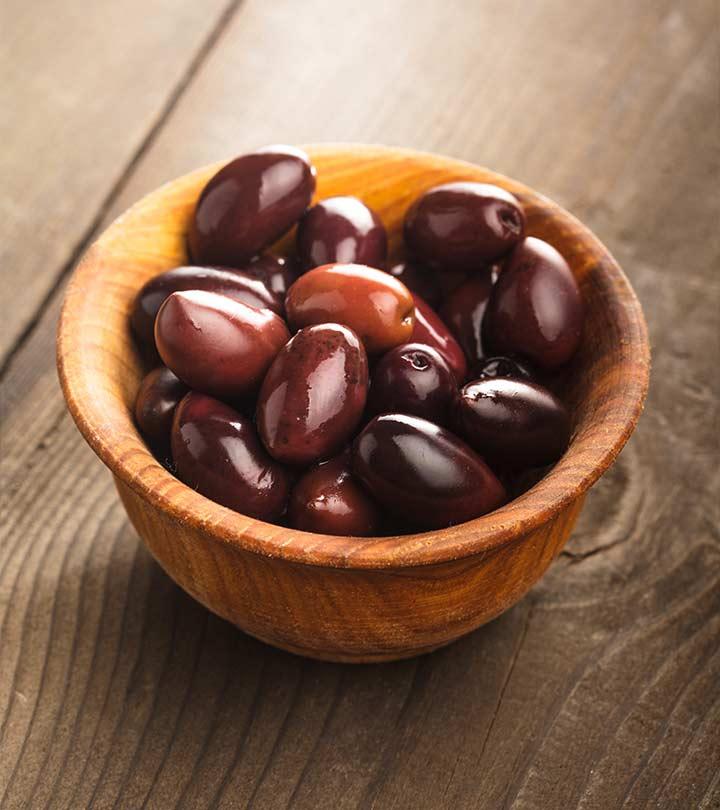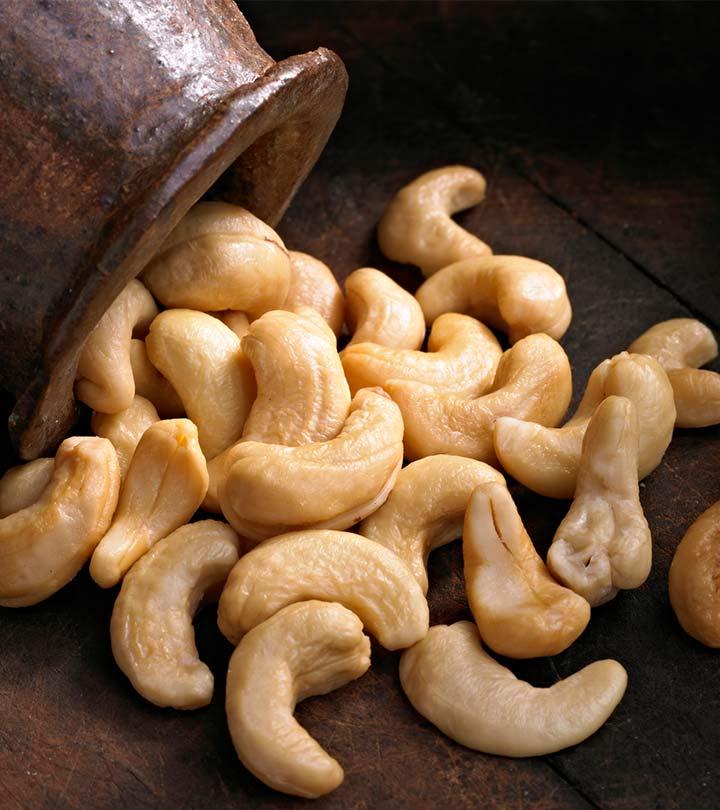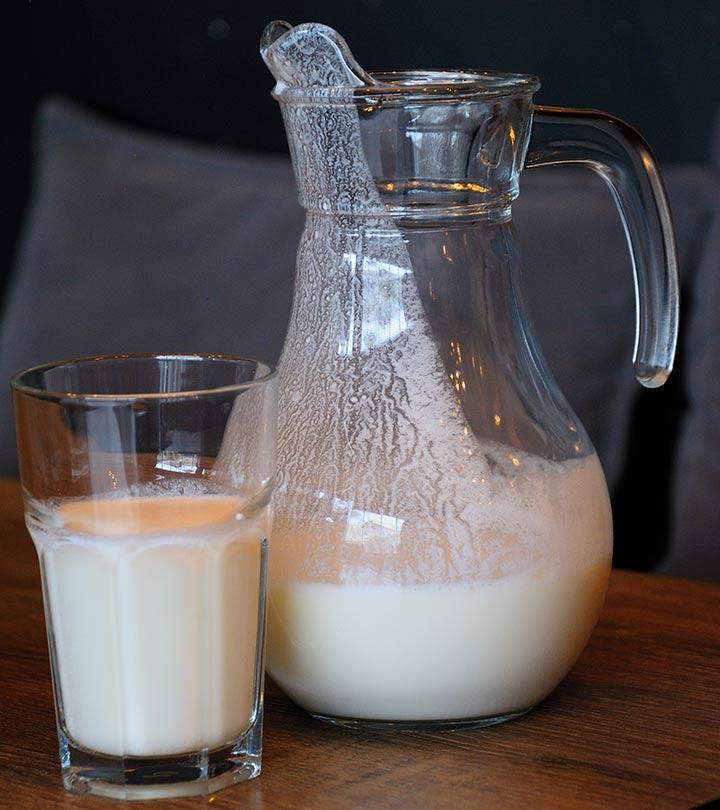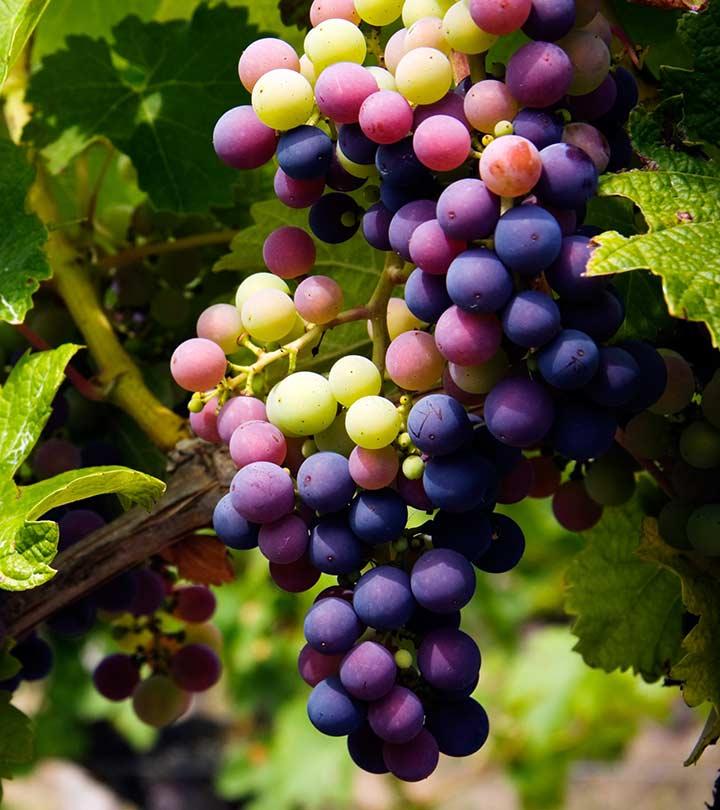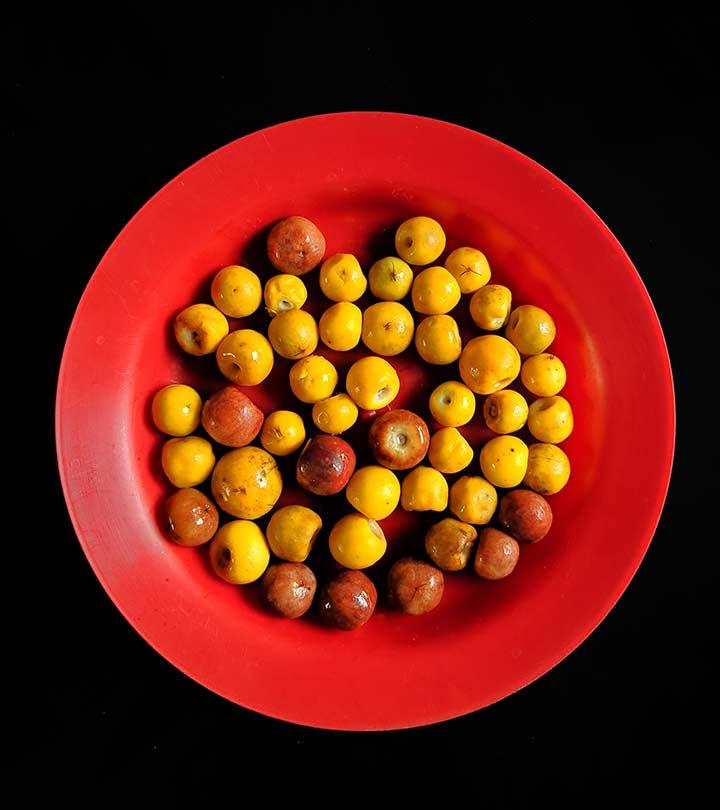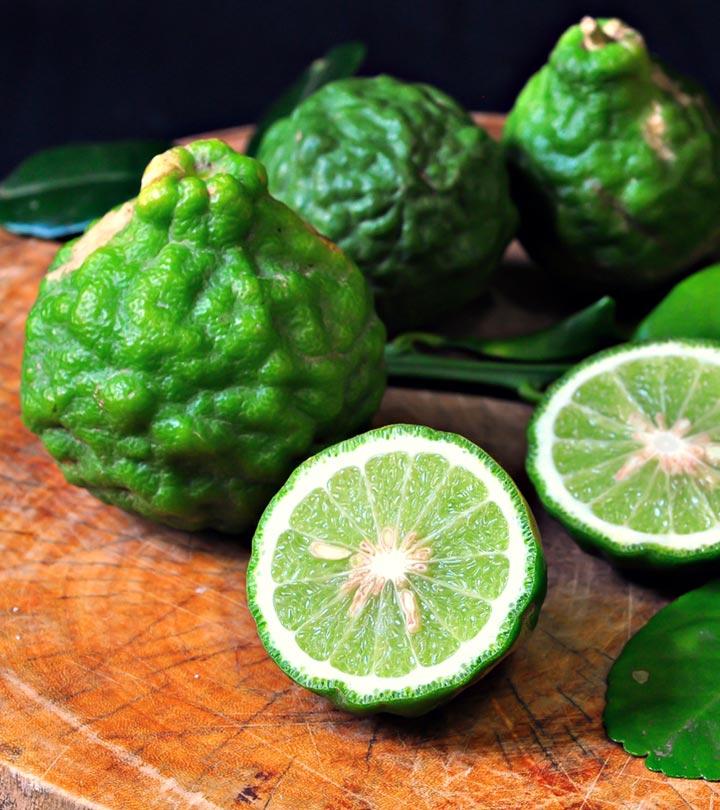7 Baobab Benefits, How To Use, And Side Effects
A closer look at its health benefits will tell you why this fruit is worth the hype!
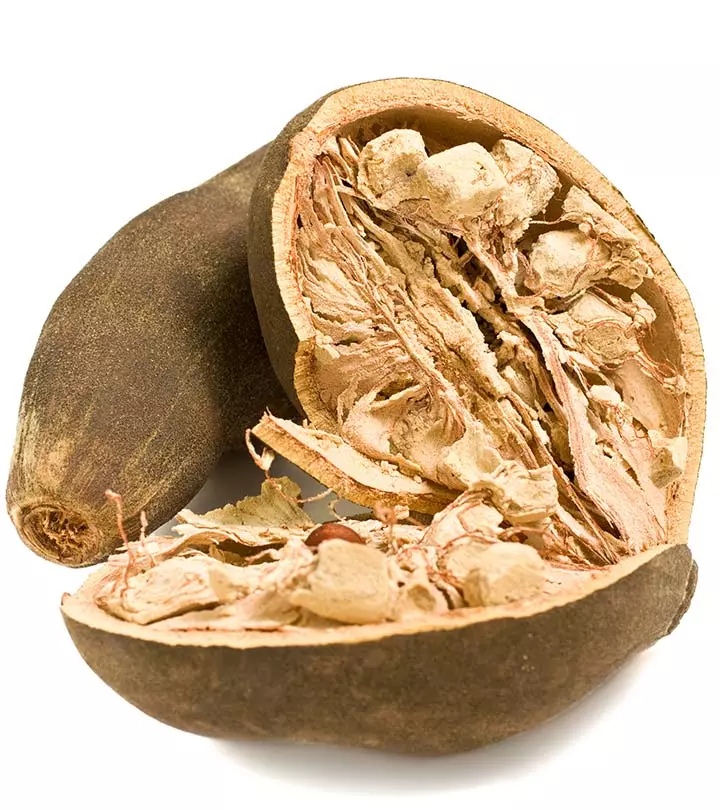
Image: ShutterStock
The baobab tree is the longest living tree with many therapeutic uses. Almost all parts of this tree, including the fruits and leaves, are edible. The benefits of baobab are many and can be attributed to its dietary fiber, polyphenolic compounds, and a wide range of vitamins and minerals. Baobab fruit is considered a superfood that can help prevent liver damage, aid in weight loss, regulate blood glucose levels, and improve skin health (2).
This article explores the health benefits of baobab, its nutrition content, how to use it, and its possible side effects. Keep reading.
 Know Your Ingredient: Baobab
Know Your Ingredient: BaobabWhat Is It?
It is a large deciduous tree, parts of which are used for food, medicine, and shelter.
What Are Its Benefits?
The nutrient-rich baobab fruit can prevent liver damage, help lose weight, and control blood sugar. It also improves skin, digestive health, and immunity power.
Who Can Consume It?
It is safe for consumption for all in moderate quantities.
How Often?
Enough evidence is unavailable to recommend the intake quantity, but it can be used in moderation.
Caution
Enough research is not available on the side effects.
In This Article
What Is Baobab? Where Can You Find It?
The monkey-beard tree or the upside down-tree, a.k.a baobab (Adansonia digitata) is a characteristic of sub-Saharan Africa. It is widely distributed in Africa and north-western parts of Australia. The baobab tree (all species of Adansonia) bears large, oval-shaped fruits with woody outer shells.
The baobab fruit has a mushy pulp when ripe. This pulp turns chalky, tough, and crumbly when the fruit dries. Due to the hard capsule (outer shell), baobab fruit has heat-protective and water-resistant properties. This African fruit can survive extreme weather conditions, such as wildfire, high sea tides, etc. (1).
 Fun Fact
Fun FactWhile the outer capsule makes the fruit almost unaffected by nature, the inner pulp is quite the opposite. It is a reservoir of nature’s best gifts. Be it vitamins, proteins, or therapeutic phytochemicals – baobab has plenty of them. Scroll down to know more!
Wow-bab!
- The baobab tree is considered to be one of the longest living. It has a lifespan of several thousands of years!
- Since these trees do not produce growth rings like other species, experts say that it is difficult to date them.
- But a tree in South Africa was found to be as old as 6,000 years!
- Baobab fruit pulp is particularly rich in vitamin C. Consumption of 40 g covers 84%-100% of the Recommended Daily Intake (RDI) for pregnant women (19-30 years) (2).
- The kernels of baobab fruit had the highest magnesium content, around 600–700 mg/100 g. This is higher than the magnesium content in other kernels or seeds.
- The shells of the baobab fruits are so hard and tough that they can be used as vessels and pots.
- Hollow baobab tree barks are used as natural water reservoirs. The hollow space is filled with water and tightly sealed. The capacity is 9,000-1,00,000 liters per tree. The water stays untouched and is potable for years and droughts together.
- The baobab fruit has antipyretici Medicines or chemicals that help reduce the body temperature in case of fever, such as aspirin and paracetamol. and analgesici Any medication that selectively reduces pain without impairing consciousness or stopping the conduction of nerve impulses. This is why pregnant women are given juices made of the fruit pulp in water.
- Pregnant women in parts of Africa used the barks of mature baobabs to enlarge their birth canals before parturition. In India, the pregnant woman bathes in water that has been boiled with the baobab bark.
- Baobab improves the absorption of iron in your body. Since baobab has a high amount of vitamin C, the iron from plant and animal-based foods gets coupled with it and is absorbed better.
What’s In The Baobab Fruit? What Makes It Special?
The edible parts of the baobab tree are its leaves, seeds, and fruit pulp. Dried fruit pulp has high levels of vitamin C, potassium, calcium, and dietary fiber. The fresh pulp is used to make local foods (snacks), fruit juices, sweets, brews (as a fermenting agent), and porridges.
The fruit pulp was found to contain macro and micronutrients like calcium, potassium, magnesium, sodium, phosphorus, iron, copper, manganese, and zinc (3).
The seeds also find a lot of uses. Baobab seeds are roasted and eaten as a nutritious snack. Fermented seeds are made into a traditional recipe called ‘maari.’ The seeds are rich in essential lipids (about 11.6 – 33.3 g/100 g of dry weight) and amino acids (2).
With all these nutritional elements, the baobab fruit might be an excellent fortifier and supplement to your health, don’t you think?
Well, we can’t agree more. Read on to find out how it can improve your health.
How Can Baobab Improve Your Health? What Are Its Benefits?
1. Has Hepatoprotective Effects
The baobab fruit contains terpenoids, flavonoids, phytosteroids, amino acids, vitamins, lipids, beneficial carbohydrates. The dry fruit pulp possesses high amounts of vitamins C and B (2).
Irrespective of the form of the fruit you take, the antioxidants present in baobab make it an effective hepatoprotectant, i.e., it can prevent damage to the liver. The vitamins and phytochemicals in baobab scavenge the free radicals in your body.
In a rat study, baobab extract was found to prevent lipid peroxidation by scavenging the free radicals (4). Hence, baobab might prevent the inflammation of a healthy human liver too.
2. Might Help In Weight Management
The baobab fruit is known for its high fiber and polyphenol content. It was proven that these elements help in promoting satiety in adults. The baobab fruit reduces the glycemic response of foods when added to them (5).
It delays the absorption of starch from certain foods, leaving you feeling full for a long time. Research points out that baobab can help in managing weight by stopping hedonic hunger pangs (6).
However, this aspect is not well-studied and needs extensive research to understand the underlying mechanism of baobab.
3. Controls Blood Sugar Levels
This benefit is an extension of the one listed above. As baobab can delay the digestion or breakdown of starches, it affects the glycemic index or response of a food it is mixed with.
This means that consumption of the baobab fruit doesn’t lead to a sudden spike in blood sugar levels. The biochemical make-up and abundant dietary fiber of this fruit set up a slow and regulated release of glucose into the blood (7).
Baobab is, hence, a good food additive for those who have diabetes and cardiovascular diseases.
4. May Give You Clear And Younger-looking Skin
Baobab fruit has one of the highest levels of antioxidants. It also has good amount of vitamin C, about six times that in oranges! The fruit pulp is rich in dietary pulp along with polyphenols.
Also, the seeds of this fruit contain essential fats, vitamin E (tocopherols), and several terpenoids. Baobab oil is a rich moisturizer. Young leaves of this plant are said to contain about 9-27 mg/kg of provitamin A (8).
The micronutrients in baobab can help in skin tightening by supporting collagen synthesis. The abundant antioxidants eliminate the accumulated free radicals that trigger the signs of skin aging like wrinkles, pigmentation, stretch marks, blemishes, skin infections, etc. (7).
 Quick Tip
Quick Tip5. Treats Digestive Ailments And Aids Digestion
African traditional medicine uses parts of baobab as a natural remedy to treat diarrhea, nausea, dysentery, and other chronic digestive disorders. Reason? The abundant dietary fiber in baobab fruits (9).
These fruits (dried or fresh) have both insoluble and soluble fibers. The water-soluble part of fiber eases digestion. It dissolves in water and brings down the dehydration in case of diarrhea.
The insoluble fiber stays undigested in your GI tract and acts as a bulking agent (laxative). It cures constipation and irritable bowel syndrome by preventing the hardening of stools in the colorectal passages.
Due to the high fiber content, the remnant baobab pulp and residue is acted upon by the intestinal microflora. This way, baobab is a prebiotic and aids digestion of complex starches, lipids, and proteins (7).
6. Boosts Your Immunity And Prevents Cancer
Owing to abundant antioxidant availability, the baobab fruit and its pulp are known to be effective immunostimulantsi Chemical compounds that help stimulate the immune system’s capacity to combat diseases and infections. . A study suggests that the plant-derived arabinogalactan proteins in baobab are effective in modulating skin innate immune responses (10).
Research has it that the fruit, leaf, and seed extracts have antimicrobial properties. The protective bioactive ingredients pose a threat to Bacillus subtilis, Escherichia coli, Mycobacterium leprosy, Candida albicans, and Saccharomyces cerevisiae (9).
The fruit extract restores the antioxidant to oxidant balance that is triggered by cancers. It also restores the activity of housekeeping and tumor suppressor genes (like p53 and BCL2). These genes are the common targets in various cancers and protect cells from apoptosis (cell death) (11).
7. May Promote Wound Healing
The baobab fruit contains vitamins C and E that may aid wound healing (12). Vitamin C aids collagen production, which is essential for skin repair (13). Vitamin E also plays a significant role in wound healing. It helps protect the skin cells from damage caused by free radicals and inflammation. It can also enhance skin regeneration, reduce scarring, and promote the overall healing process (14). Baobab oil is also often applied topically on wounds for healing (15). However, detailed scientific research is warranted for a clear understanding of its wound healing mechanism. Also, it is recommended to consult your healthcare professional before using baobab for wound healing.
Baobab is called the “Tree of Life’ for its long lifespan and longer list of industrial, therapeutic, cosmetic, and nutraceutical applications.
If you are eager to try this African wonder, see what the next section has in store for you.
How To Use Baobab
Baobab and its extracts are available in several forms on the market. Check these out:
- Baobab extract capsules
- Baobab superfruit powder
- Baobab essential oil (for external use only)
- Baobab leaf powder
- Baobab fruit pulp body butter (for external use only)
Dried baobab bark is also available in local markets, which can be used to make teas and coffees. Dried fruit powder is added to meals to increase the absorption of certain nutrients and soothe the GI tract.
Unfortunately, there is not enough evidence to frame a recommended daily intake dose for baobab. There is no information on the upper limit of intake as well.
What we know is that baobab has high levels of ascorbic acid (vitamin C). It is not harmful or lethal, but just be aware.
That brings us to the next obvious question…
The baobab fruit sounds too good to be true because of its miraculous benefits. Does it have any side effects?
Well, read on!
Are There Any Adverse Effects Of Using Baobab?
We don’t know yet because there is not enough research bringing out the side effects of baobab fruit or other parts of the plant. This is the reason there is no fixed dose or toxicity limit for this gift of nature.
One hiccup could be excessive fiber intake. If you have too much of the fruit pulp or the supplement, you might have to run to the loo many times in a day!
Infographic: Unveiling The Health Benefits of Baobab
The baobab fruit, known for its many therapeutic uses, is rich in essential vitamins and minerals. It is considered a superfood that helps treat many ailments. While there are many health benefits of baobab, we have listed the most important ones in the infographic below. Check it out to know more.

Illustration: StyleCraze Design Team
Baobab is a tree with large fruits with a citrus-like flavor. They contain various vitamins and minerals, dietary fiber, and polyphenolic compounds. Baobab benefits your health in numerous ways. It may help prevent liver damage, aid in weight management, boost the immune system, control blood sugar levels, offer you clear and younger-looking skin, and aid in digestion. You can use baobab as capsules, powder, and oil. You can also find baobab bark, which can be used to make coffee and tea. However, there is limited data available on the side effects of baobab. Hence, consume it in moderation to reap its maximum benefits.
Frequently Asked Questions
Is baobab good for hormones?
Baobab is believed to lower cortisol levels, which reduces stress hormone levels and may improve emotional wellness. However, there is limited data available in this regard.
Is baobab acidic or alkaline?
Baobab fruit is considered to be one of the most alkaline foods, with a potential renal acid load rating of -52.
What does baobab powder taste like?
Baobab powder has a tangy flavor. Its pleasant zingy flavor is an excellent addition to any drinks or food items.
Is baobab good for fertility?
Yes. The tubers of baobab have been used to enhance testosterone levels in males with fertility issues. A strong concentration of terpenoids in baobab root tubers improves testosterone levels (16).
Can I mix baobab with hot water?
Yes. You can mix baobab with hot water. In addition, you can add its powder to your favorite beverages, like smoothies or juices.
Key Takeaways
- The baobab tree is also known as monkey-beard or upside-down tree, and its fruit has a mushy pulp when ripe.
- The fruits of this longest-living tree possess analgesici Any medication that selectively reduces pain without impairing consciousness or stopping the conduction of nerve impulses. and antipyretici Medicines or chemicals that help reduce the body temperature in case of fever, such as aspirin and paracetamol. properties.
- The dried fruit pulp is rich in vitamin C and other nutrients that help weight management, control blood sugar levels, and improve skin health.
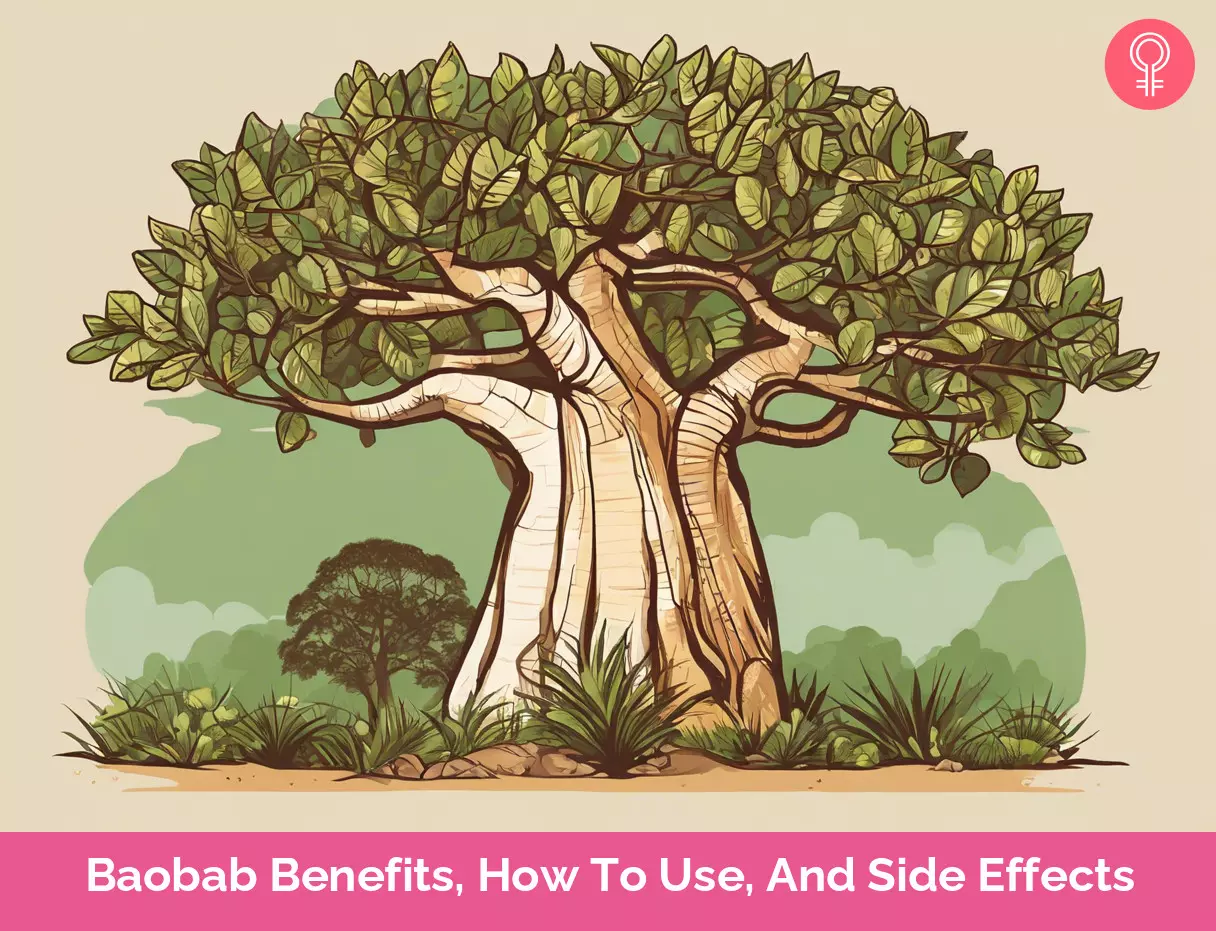
Image: Stable Diffusion/StyleCraze Design Team
Learn about the amazing health benefits of baobab fruit powder! Check out this video and discover how this superfood can help improve your overall health and well-being.
References
Articles on StyleCraze are backed by verified information from peer-reviewed and academic research papers, reputed organizations, research institutions, and medical associations to ensure accuracy and relevance. Read our editorial policy to learn more.
- “Adansonia digitata and Adansonia gregorii fruit shells serve as a protection…” Botanical Studies, US National Library of Medicine.
- “Baobab food products: a review on their composition…” Critical Reviews in Food Science and Nutrition, US National Library of Medicine.
- “Nutritional variation in baobab (Adansonia digitata L.) fruit pulp…” Food Science & Nutrition (Open Access), US National Library of Medicine.
- “Evaluation of Hepatoprotective Activity of Adansonia digitata…” Evidence-based Complementary and Alternative Medicine, US National Library of Medicine.
- “The polyphenol-rich baobab fruit (Adansonia digitata) reduces…” Nutrition research, US National Library of Medicine.
- “The acute effects of baobab fruit (Adansonia digitata) on satiety” Nutrition and Health, US National Library of Medicine.
- “There are nine baobab species.” SUST Repository.
- “Antioxidant capacity of Adansonia digitata fruit pulp…” Acta Phytotherapeutica.
- “Extraction of oils from the seeds of Baobab…” University of Khartoum.
- “Arabinogalactan Proteins From Baobab and Acacia seeds…” Journal of Cellular Physiology, US National Library of Medicine.
- “ The Effect of Seeds and Fruit Pulp of Adansonia digitata L. (Baobab)…” Food and Nutrition Sciences, Scientific Research.
- “ Bioactive Compounds for Skin Health: A Review” Nutrients, US National Library of Medicine.
- “ The Roles of Vitamin C in Skin Health” Nutrients, US National Library of Medicine.
- “ Vitamin E in dermatology” Indian Dermatology Online Journal, US National Library of Medicine.
- “ Beauty in Baobab: a pilot study…” Revista Brasileira de Farmacognosia, ScienceDirect.
- “ Mineral and phytochemical composition of baobab (Adansonia digitata L.) root tubers from selected natural populations of Malawi” US National Library of Medicine.
Read full bio of Heather M. Duquette-Wolf
Read full bio of Ravi Teja Tadimalla
Read full bio of Himanshi Mahajan





